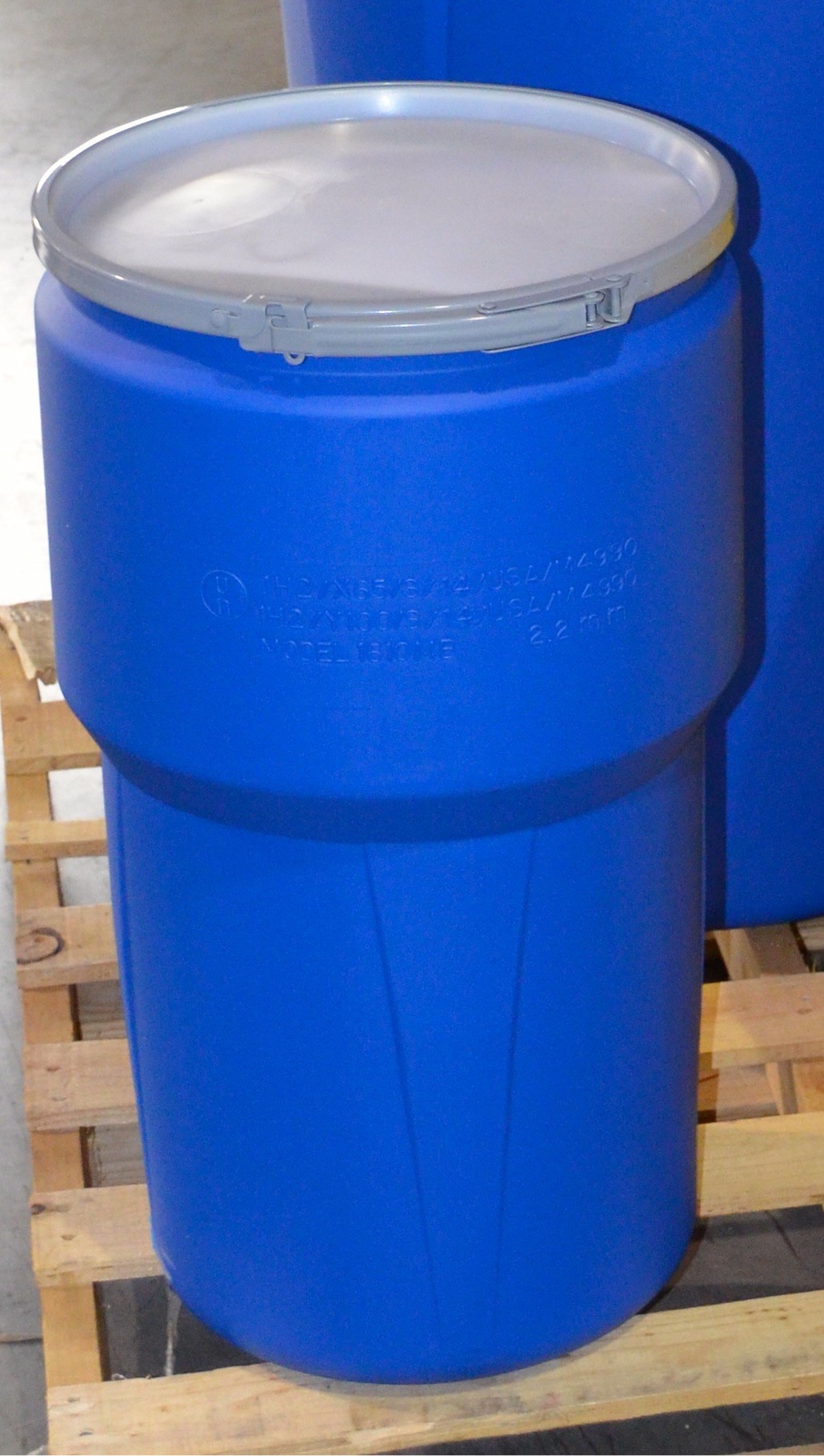![]() 1H2/X65/S/14/USA/M4990
1H2/X65/S/14/USA/M4990
The above marking shows what you would find printed or embossed on a "UN rated" plastic drum. So what does this code really mean?
US Dot/PHMSA in accordance with international agreements for shipping dangerous goods (hazardous materials) requires packaging that meet specific testing and construction standards. This packaging is often referred to as UN packaging, UN approved, UN certified or “POP” (performance oriented packaging). The above marking would be embossed or printed on a package and indicates that it has met all the testing and construction requirements to meet these standards.
To choose the correct package you first identify the material you need to ship. Consult 49 CFR (for shipping within the U.S.) or other regulations, these would indicate the size and type package that you could use to ship your material. The UN rating for the drum (or other packaging) would show you if that particular package is suitable for your use.
Decoding the UN number
The numbers and letters in a UN rating all indicate information about the package. Each section separated by a “/” refers to a separate bit of information.
First Section – Type of Container, Material, Type of Head
The number indicates type of container:
1=Drum
2=Barrel
3=Jerrican
4=Box
5=Bag
6=Composite packaging
The letter indicates the material
A=Steel
B=Aluminum
C=Natural Wood
D=Plywood
F=Reconstructed Wood
G=Fibreboard
H=Plastic
L=Textile
M=Paper, multi-wall
N=Other metal
P=Glass, Porcelain, Stoneware
The second number is specific to drums and indicates
1=Closed Head (non-removable)
2=Open Head (removable)
Our example package listed above is a 1H2 which is an Open Head, Plastic, Drum.
Second Section – Packing Group and Gross Mass/Specific Gravity
This section always starts with X, Y, or Z which shows the hazard level the package can accept.
X=High Hazard, Packing Group I, II, or III
Y=Medium Hazard, Packing Group II or III
Z=Low Hazard, Packing Group III only
The number refers to the maximum gross mass in kg that this package can carry for Solids or Sealed Inner Packagings.
Our example shows “X65”, this package can hold up to 65 kgs (143 lbs) of Packing Group I, II, III materials.
Third Section – “S” for Solids
The S indicates you can use this container for solids or liquids packed in inner packages. You cannot use this for free liquids.
If the S is not there then the container is a single package designed to hold liquids and the number from the second section indicates the maximum specific gravity of the liquid to be contained.
Fourth, Fifth and Sixth Sections
Fourth – Year of manufacture
Fifth – Country of manufacture
Sixth – Manufacturers code: unique to manufacturer or certifying agency.
Why 2 UN Ratings?
You may have noticed some drums have 2 different UN ratings. This shows that the drum has been tested twice. Once for the maximum weight for an X Rating (PG I, II, III) and a second time for a different weight for a Y-Rating (PG II & III). This allows you to put more material in this drum if you have a less dangerous material.


So for our example:
![]() 1H2/X65/S/14/USA/M4990
1H2/X65/S/14/USA/M4990
This would be an Open Head Plastic Drum, capable of holding up to 65 kg (143 lbs) of a PG I, II, or III solid material (or inner packages), and that it was made in 2014 in the U.S. by Eagle Manufacturing.
For more information on the full range of Eagle Safety Products we have for immediate shipment, follow the links below:
